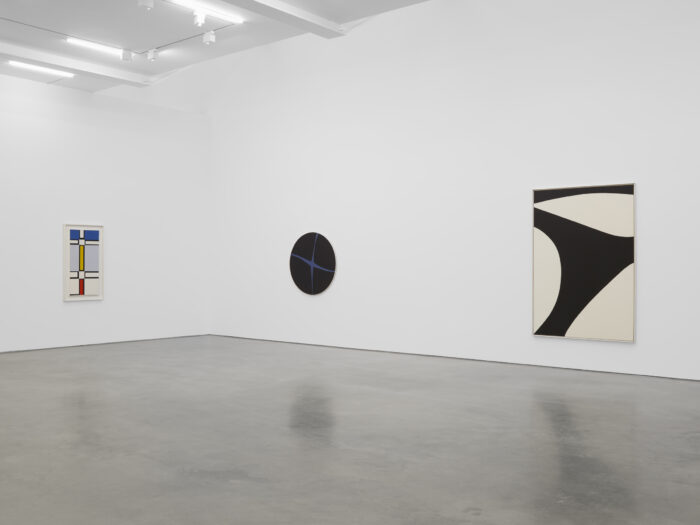
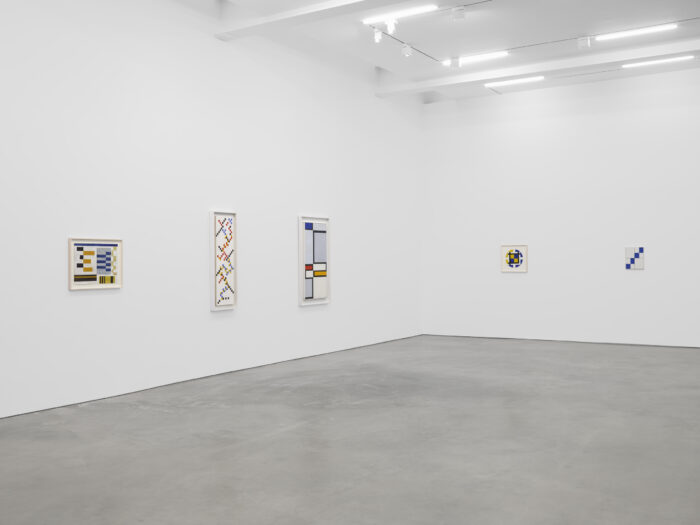
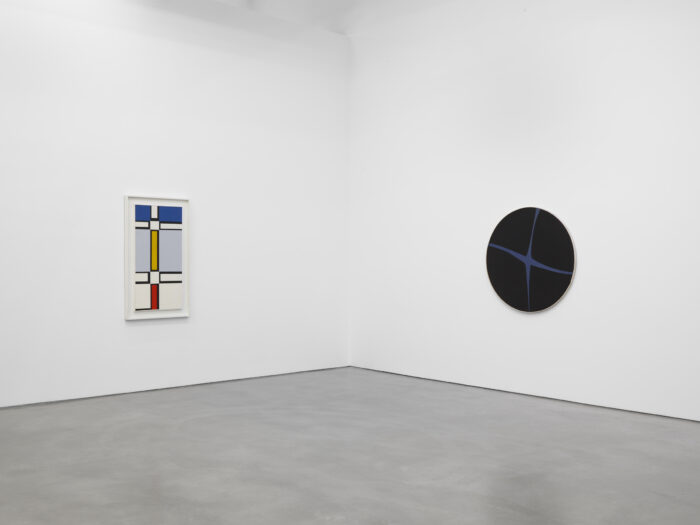

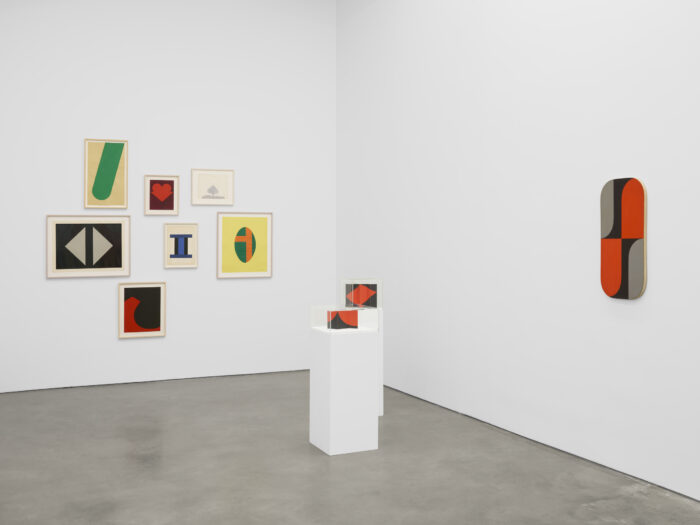


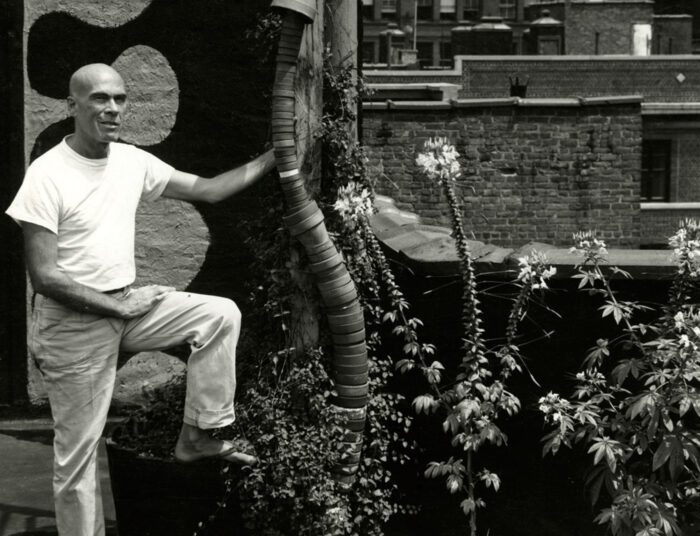
Leon Polk Smith: 1940 – 1961
Lisson Gallery, NYC
January 11 – February 17, 2024
Leon Polk Smith, a trailblazer in the hard-edge style of Minimal, abstract art, embarked on his artistic journey in the early 1940s upon relocating to New York City. This exhibition sheds light on his work from the 1940s to the 1950s, showcasing key paintings alongside studies, drawings, and maquettes. Influenced by diverse sources such as the De Stijl painters, Piet Mondrian, and the vivid colors of Native crafts in his home state of Oklahoma, Smith’s creations during this period laid the foundation for his artistic legacy.
Born in Indian Territory just before it became Oklahoma, Smith, with Cherokee ancestry, grew up amidst the complex history of Chickasaw and Choctaw Native communities in rural Oklahoma. Rejecting a life on the farm, he pursued education after supporting his family in agrarian and ranching pursuits. Graduating from Teachers College at Columbia University in 1938, Smith’s exploration of art began. His pivotal encounters in New York, particularly at Albert E. Gallatin’s Gallery of Living Art, exposed him to Mondrian, Brancusi, and Arp, shaping his artistic trajectory.
Smith’s early works, influenced by Cubism, Surrealism, and Expressionism, evolved into geometric abstraction in the 1940s. Paintings like “Repeated Forms” and “Black Fruit Bowl” demonstrate his mastery of repetition and form. The landscape of Oklahoma and New Mexico profoundly impacted Smith’s sense of geometry, reflected in pieces like “Untitled” (1946) and “Diagonal Passage No. 2” (1946-47). Smith’s connection to his roots is evident in painting titles like “Ada” (1958) and “Okie” (1957), referencing Oklahoma towns and early-life experiences.
Throughout his career, geometric patterning persisted in Smith’s art, influenced by European Modernism and Native American craft, such as ribbonwork. His unique synthesis of biographical influences and a keen study of European traditions resulted in a radical and individual artistic oeuvre. While later works like “Constellations” and “Correspondences” gained acclaim, it was Smith’s formative years in geometric abstraction that forged revolutionary artworks in his practice.
